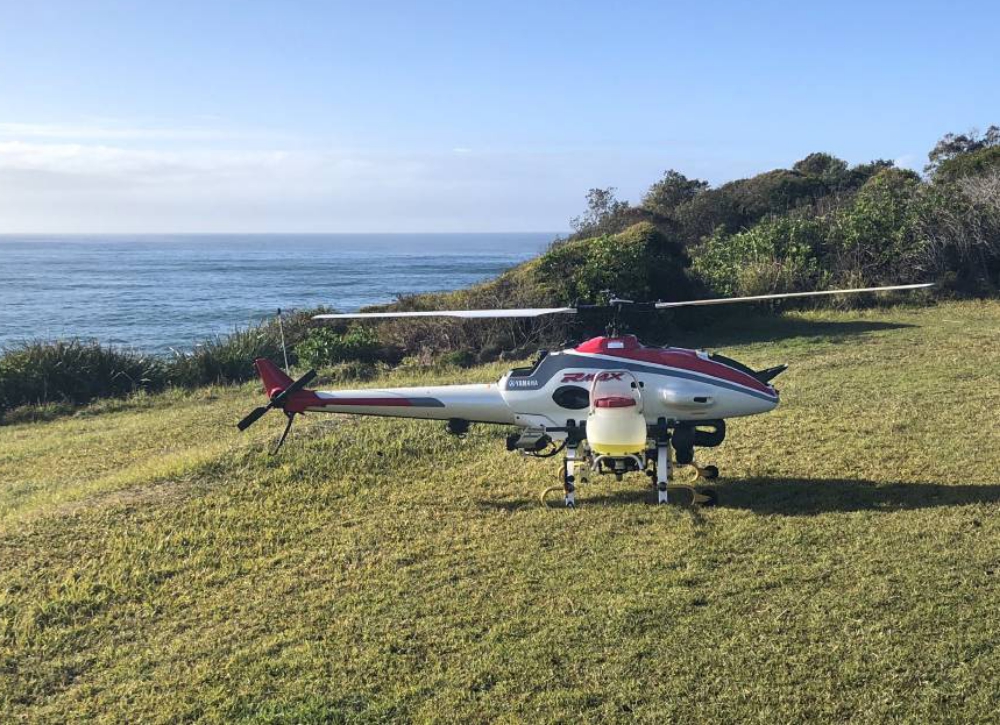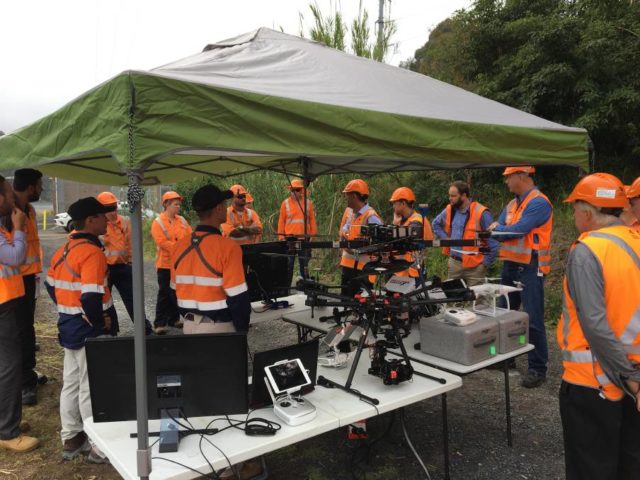Lake Macquarie Council has begun using drones along isolated cliffs at Swansea Heads and Caves Beach to spray tracts of Bitou bush, an invasive South African weed. It is understood to be the first time drones have been used for weed spraying in the Hunter.
Council’s manager planning and sustainability, Alice Howe, said drones are ideal delivery tools in areas difficult or dangerous to reach.
The low operating height and flying speed of less than 20km/h of the drones, combined with the downward air movement from the rotor “ensures extremely accurate application of the herbicide”.
“These drones can provide precise, safe and effective treatment of Bitou bush, which is strangling out native species in the inaccessible coastal cliff areas we’re targeting,” Dr Howe said.
“Aerial spraying is faster than spraying by hand and can control more than 95 per cent of Bitou bush in targeted areas.
“The precision means minimal impact on native plant species and a higher probability of eliminating the problem on our first go.”
Dr Howe expects drones, which are already used by lifeguards to spot rips and sharks, to soon be used in other council tasks, including ”anything from bridge and tree inspections to using underwater drones to inspect wharves and jetties”.
Mayfield West company Airsight Australia is using drones in the geo-spacial sector, providing data to organisations from asset inspections and land surveying.
Chief operating officer, Ashley Cox, said Airsight Australia – started by two mates in 2012 – has grown to a staff of 15 and recently took on a trainee drone pilot.
”We do a lot of work in the railways,” he said.
“We can put a drone into that space; there’s no risk to humans, it’s a very low cost piece of equipment and we can access that without shutting down the train line.”
Mr Cox said the industry has exploded in recent years and he predicts an array of drone uses in the future.


